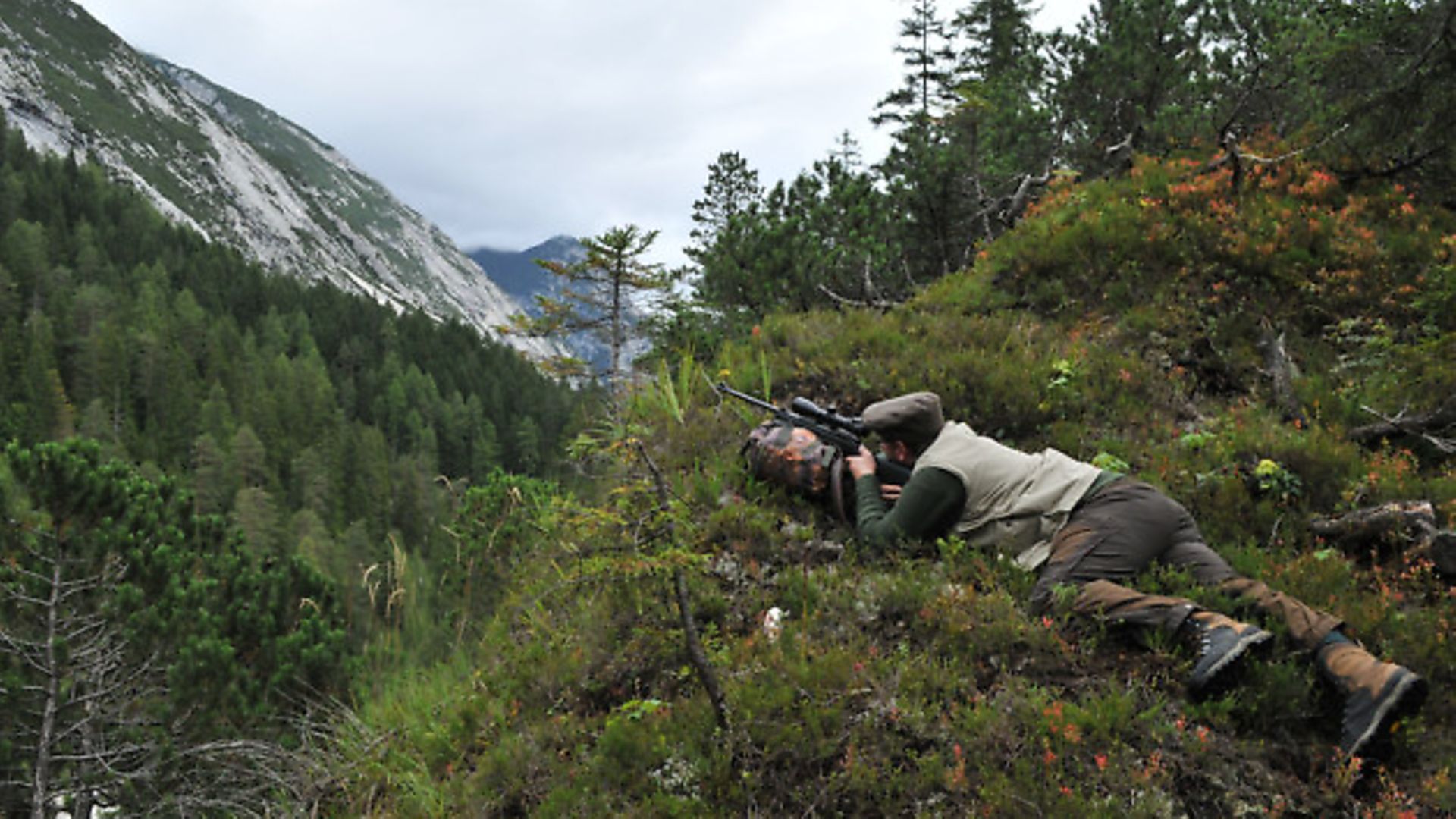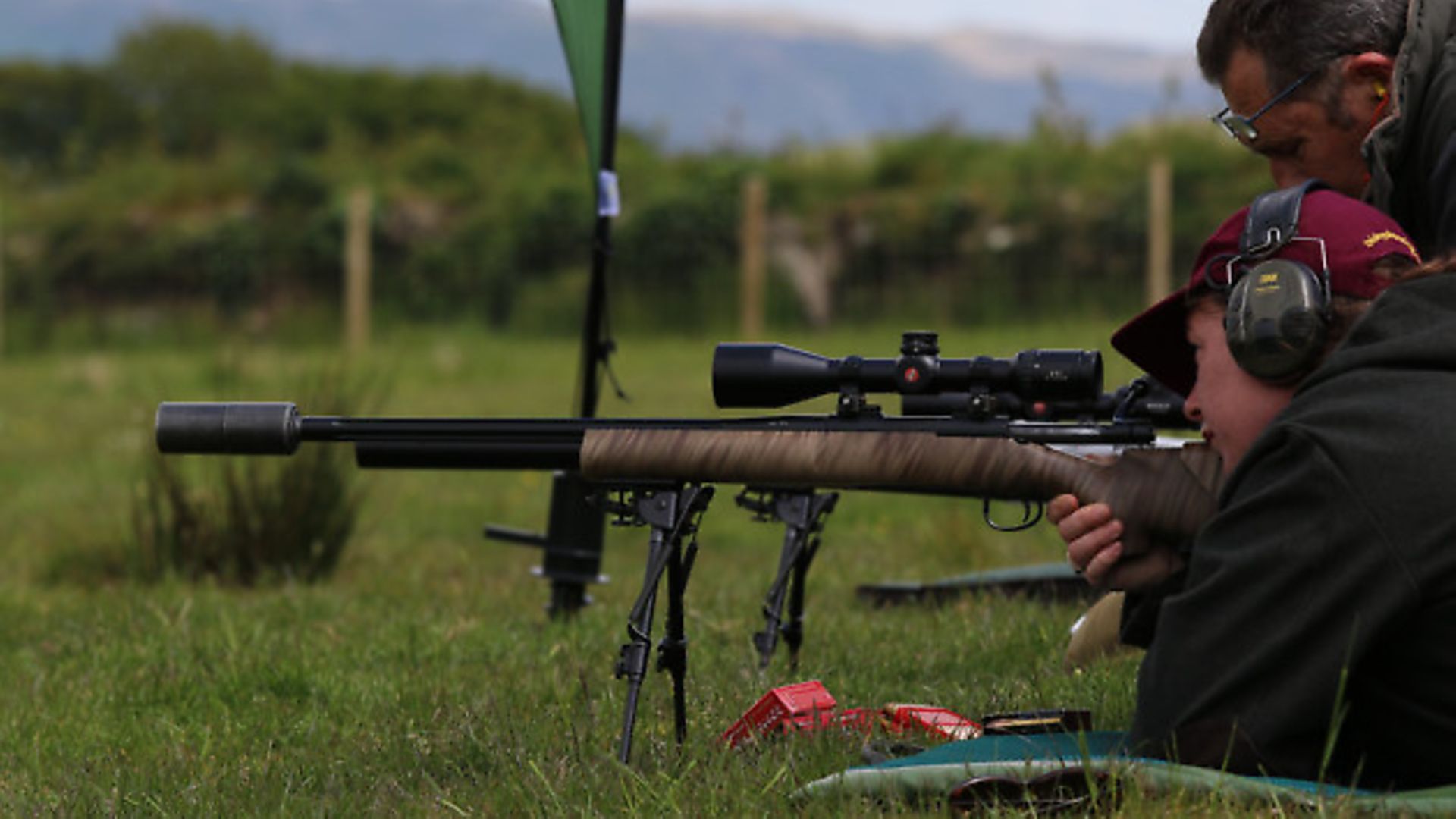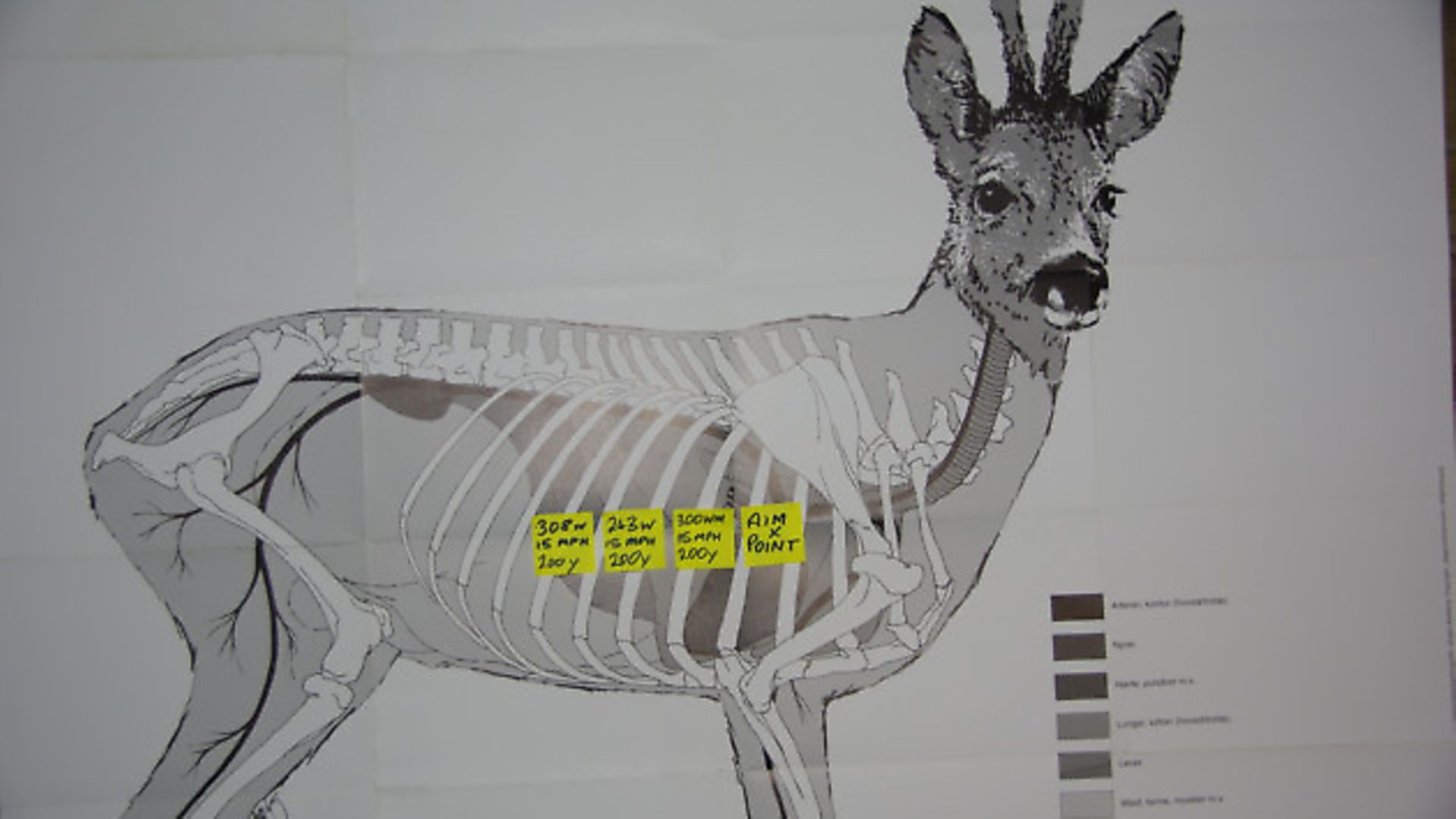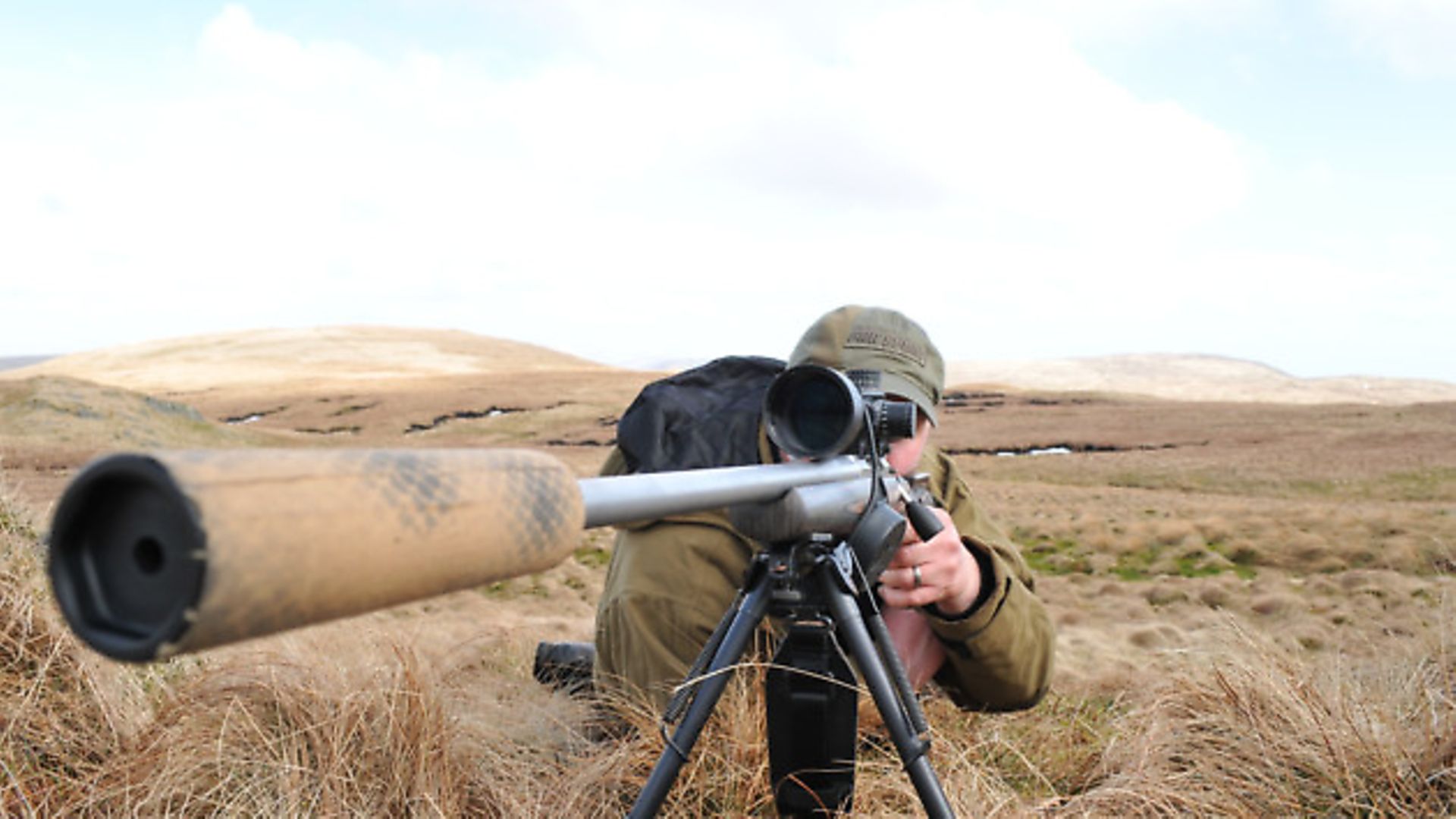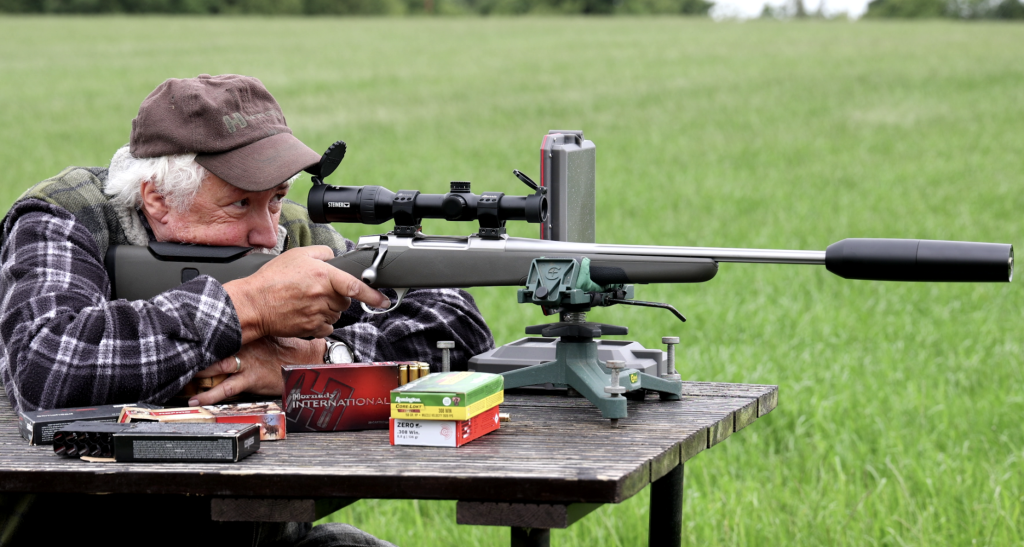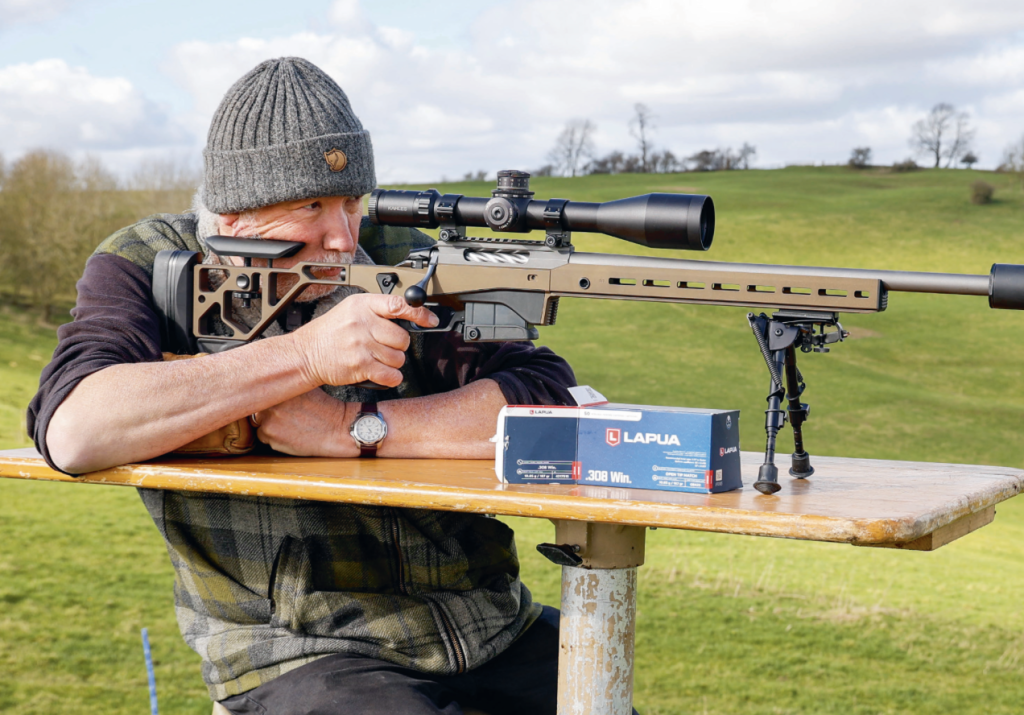A practical guide to stalking deer in windy conditions
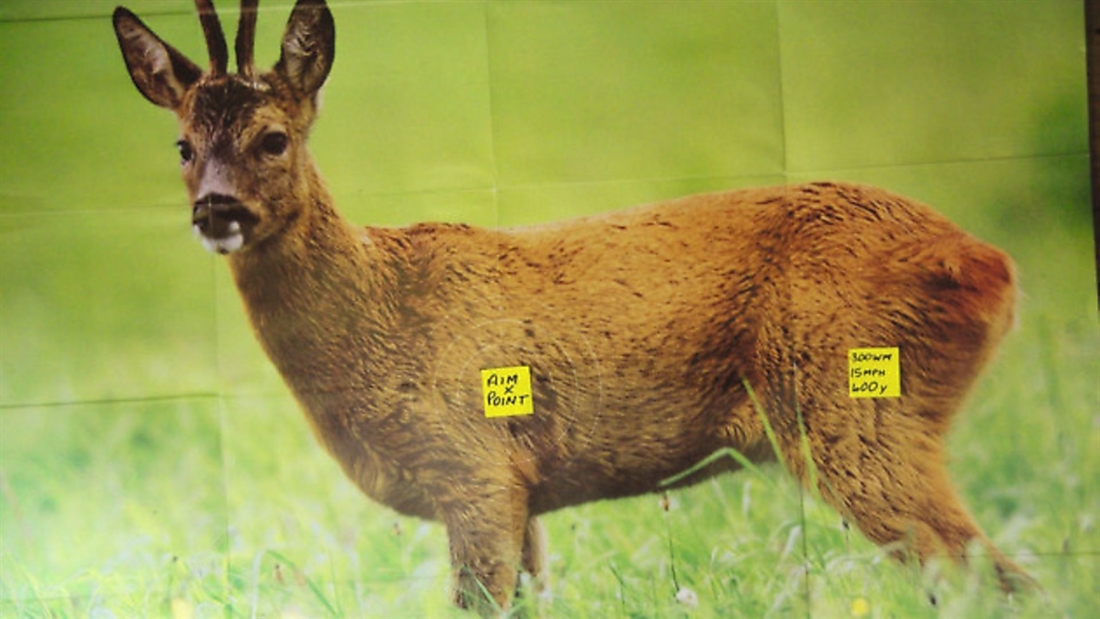
Andrew Venables from WMS Firearms Training provides this detailed guide to help shot placement when stalking deer in windy weather
When stalking in the woods of southern England, your concerns about the wind will be focused on whether the direction will change and carry your scent to the ever-wily quarry. The merest whiff of shampoo, sweat, gun oil, perfume, aftershave or, God forbid, washing powder, will have you heading for the meat aisle in Waitrose in a bound or three. Assessing the wind direction is vital to a successful hunt.
You can buy powder puffers, which indicate the faintest breeze and its direction, to help you out with your stalk. When in Africa, I stoop to pick up fine dust from the game trails and put it into my left-hand trouser pocket, where it will likely join some ash collected from the camp fire on the way out from breakfast. Either or both will indicate the wind drift and direction if trickled from the fingers during a tense stalk. In Wales, we don’t always have dust to hand, so some sphagnum moss or grass tips have to suffice.
The wind, and the fact that a deer’s sense of smell is anywhere between 500 and 1,000 times more sensitive than ours, will affect whether we ever get close enough to make the shot. In woodland, it is highly unlikely that the wind will affect the actual shot, but what happens when we are out on the downs of Hampshire, or up in the Highlands?
Last month, I wrote about some of the ballistic shooting solutions we use for practice at WMS Firearms Training. I cautioned that hunting is not about ballistic solutions; it is about getting close enough not to need them. However, if we regard 200 yards as an achievable distance for deer rifles, how much will wind affect our shot?
Let’s consider a .243 100gr bullet and a .308 150gr bullet, both of soft-point hunting design. Do we have to worry about a 15mph side wind if we are shooting at 200 yards (or 185m)? The .243 is going to be deflected by five inches, the .308 by seven inches. This may surprise some readers who would expect the bigger, heavier bullet to fare better in wind. Wind deflection is about speed and ballistic coefficient (BC), not size and weight. The .243 100gr soft-point bullet has a BC of .356, and leaves at 2,960fps. The more portly .308 has a BC of .294, and leaves at 2,850fps. In fact, both velocity figures are likely to be 100-200fps less out of your stalking rifle; we find that claims on the box are seldom matched in reality.
Five to seven inches at 200 yards is enough to turn a clean kill into a miss, or a bad wound, on small to medium deer, and a very long track and possible loss on larger deer. So, without being blinded by science and reverting to gizmos, how can we best deal with wind effects at sensible stalking ranges? The first rule is simple: when in doubt, don’t shoot.
The second rule, for three or nine o’clock crosswinds of 10-15mph (16-25kph) at ranges of 150-200 yards, is to aim at the side of the kill zone which matches the breeze on your cheek: left for left, and right for right. A 10-15mph wind feels fresh to bracing, will bend the grass and rushes, move heather, rustle leaves and move the branches on trees. Move your cross hairs to the edge of the windward side of the kill zone to ensure the bullet will hit somewhere across its width for a clean kill. Remember that halving the distance to 100 yards will roughly halve the deflection, not remove it. That is still 2.5 to 3.5” out, which makes a fox or a muntjac start to look more difficult, even at 100 yards.
Intermediate distance and wind speed indicates the need to simply hold a little left or right of the centre of the kill zone. Be very wary of trying to be clever and aiming out of the kill zone at the stomach or front edge of the chest to bring home the venison. If the wind is that strong, be sensible, and get closer or pass up the shot. Deliberately aiming at the wrong spot and hitting it because the wind dropped as you fired is defeat snatched from the jaws of victory and a very bitter pill to swallow.
The real problem with wind, bearing in mind the suggestion above, is its constant variability. Like waves on the shore, wind rises and falls unpredictably, with changes in direction thrown in for good measure. One reason I hesitate to rely on clever wind solutions when hunting is that, by the time you have measured the speed and set the scope or aimed off, it may well have changed. You can’t focus on wind when all your attention is on the position, angle and behaviour of your quarry in the final seconds.
Note that head and tailwinds don’t make the job easier; they make it harder. If you measure a 15mph wind from 10 to 11 o’clock which has a 25% right value, compared to a full side wind of three or nine o’clock, and dial for it, you’d better hope it doesn’t change to a one to two o’clock 25% left value before you fire! If it does, you will be 50% out and have dialled 25% the wrong way, which goes from a chest to a gut shot on a roe. If the wind is blowing in your face, or up your trouser legs, aim for the middle of the kill zone and keep shots below 200 yards. A little left or right should not make the difference between a kill and a wound on a 6 to 8” thoracic kill zone.
When wind is any sort of issue, do not take shots on animals facing you, and do not take any ‘clever’ head or neck shots. This is courting disaster and very poor risk management. It is easy to mess up frontal shots with bullets sliding down the outside of the rib cage, breaking one leg, prolonging suffering and ruining carcasses. Three inches out on a chest shot will still kill a deer; three inches out on a head shot is a wound or a complete miss.
Stalkers with regular rifles and ammunition, relying on the point-blank zero/point-blank range principle, and following the advice above will eat well and have clear consciences.
So, you may well ask, what do you do when push comes to shove? Okay, here it is: I own a 300 WM rifle and practise lots with it. My ammunition is a 190gr hunting bullet with a BC of 0.5 and a muzzle velocity of 2,900fps. The wind deflection, assuming a 15mph cross wind, is 3.5” at 200 yards, which is half the deflection of the .308. In modest wind conditions, even if I do nothing, the bullets will land within an 8” kill zone (such as that on a fallow or red deer). If the wind is 10-20mph, I would aim at the windward side of the kill zone, and expect to keep to ranges under 200 yards. Consider horses for courses, i.e. don’t enter a Shetland pony into the Grand National.
In the event of a forced long shot – let us say 400 yards – with the 15mph side wind, I have other options: I might account for the 15” of deflection by aiming off; I could dial the windage turret 3.75 MOA or 10cm clicks (thus 37cm deflection) into the wind, but I do hesitate to dial for something which may change unexpectedly. My scope has mil dots and, at 370m, one mil dot is 37cm from the next. Fifteen inches is 38cm, so if I put the mil dot on the downwind side of the cross hairs on the centre of the kill zone, I should save the day. It is quick, and I can change my mind in an instant, if required, without breaking the shot cycle.
Please note the wind deflection of an average .308 soft point at 400 yards is around 30”, or 76cm, so twice that of my .300 WM. Further, the impact energy at 400 yards for the .308 W bullet is 980ft-lbs, while the .300 WM achieves 2,020ft-lbs at the same distance. When considering whether it’s a good idea to attempt a longer shot, remember the .300 WM bullet lands with more energy at 400 yards than a .243 bullet has at the muzzle. At 400 yards the .300 WM bullet impacts with double the energy of the .308 W.
Before you rush out to swap your .308 for a .300 WM or similar, remember that the .300 is twice as hard to shoot well; most deer are rightly shot at under 200 yards in the UK. Magnum calibres tend to do more carcass damage at normal ranges than regular deer calibres, like .308. My other favourite deer rifle is my 18”-barrelled Blaser R8, but that’s another story.
Next month, in a break from the technical, I will recount some cautionary tales of lessons learned in the field.
Related Articles
Get the latest news delivered direct to your door
Subscribe to Rifle Shooter
Elevate your shooting experience with a subscription to Rifle Shooter magazine, the UK’s premier publication for dedicated rifle enthusiasts.
Whether you’re a seasoned shot or new to the sport, Rifle Shooter delivers expert insights, in-depth gear reviews and invaluable techniques to enhance your skills. Each bi-monthly issue brings you the latest in deer stalking, foxing, long-range shooting, and international hunting adventures, all crafted by leading experts from Britain and around the world.
By subscribing, you’ll not only save on the retail price but also gain exclusive access to £2 million Public Liability Insurance, covering recreational and professional use of shotguns, rifles, and airguns.
Don’t miss out on the opportunity to join a community of passionate shooters and stay at the forefront of rifle technology and technique.



